Since general manager (GM) Tom Fitzgerald took over for Ray Shero – the man he worked under for nearly a decade – he made his goal clear for the organization, change the defensive narrative. The narrative being the Devils have one of the worst defensive groups in the entire NHL.
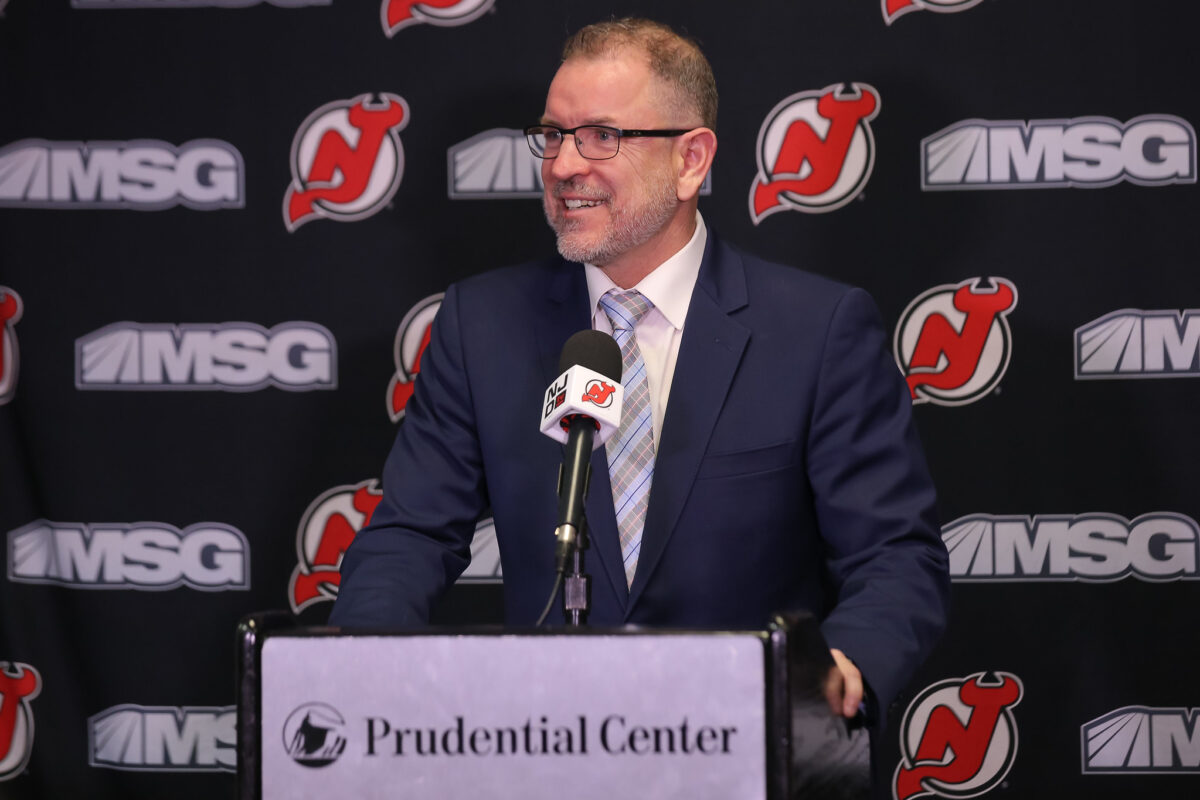
Fitzgerald made his statement through various signings, trades, and most importantly, drafting youth. He has spent a lot of assets to make sure the club has the smash mouth, but also offensive-minded defensive group that they’ve lacked since, arguably, the mid-2000s. The GM, like the teams of past, has a prototype; a large body standing above 6-foot.
Devils’ Defensive Stats
Before we break down the overhaul of acquisitions, we must first understand why Fitzgerald thought it was paramount to upgrade this unit. We’ll kick it back to the 2015-16 season, the year he came over from the Pittsburgh Penguins and was named the assistant GM.
Out of those seven seasons since he was hired by the Devils, the team ranked in the bottom half of the league in goals against per game (GA/G) six times. Their lone season not in the bottom half came in 2015-16 when they were slotted in at number eight. Their only other season where they didn’t finish in the bottom 10 of the league came in 2017-18 when they ranked at No. 15.
Looking deeper, out of those five seasons, they were in the bottom-five three times. Those appearances came from 2019 until this past season. In each of those seasons, they finished as the fourth-worst defensive unit in that category. Their worst season under this stat came in 2021-22 when they allowed 3.68 goals per game.

(Stats from Covers)
The shots against per game (SA/G) in those seasons have the same trend as the GA/G, ugly. Mimicking their GA/G, the Devils finished within the bottom 10 in SA/G in five seasons. Their two seasons not in the bottom 10 came in 2017-18 when they ranked No. 16 and in 2021-22 when they finished at 12.
Their worst season in this category came in 2019-20 where they finished sixth-worst overall and allowed 32.70 shots per game. Over the past seven seasons, the team has allowed a lot of shots and a lot of goals, meaning the percentage of those shots turning into goals must’ve been low, too, which would be correct.
The Devils finished in the bottom half of the league six in these seven seasons in percentage of goals allowed. They had three bottom-five finishes and two bottom-three finishes. The two seasons they finished in the bottom three came in 2020-21 and 2021-22. Their worst season in this category – just like in SA/G – came in 2021-22 when they allowed 11.89 percent of shots on net behind the goalie.
Finally, and maybe the most shocking discovery came in the penalty kill department. Since 2015, the Devils ranked in the top half of the league in power-play goals against (PPGA) and penalty kill percentage (PK%).
Not surprisingly, their two bottom-10 finishes in these categories mirror each other. In 2016-17, the Devils were ranked as the fifth-worst team in PPGA at 53 and eighth worst in PK% at 79.69 percent. Their other bottom-10 finish came in the shortened 2020-21 season. In the PPGA department, they were the second-worst team in the league, allowing 43 goals, and had the worst PK% at 70.95 percent.

(Stats from Covers)
A big contributing factor to these horrendous numbers is the fact that the Devils have not found success at the goalie position. Although true, the team isn’t making the job easy for whoever is between the pipes. The team has been flat-out bad at suppressing shots the past several seasons, leading to a plethora of back-breaking goals and leaving their goalies out to dry.
It’s a combination of bad defense and a bad goalie play that is leading to these low rankings and high numbers, which is why Fitzgerald had made fixing both his No. 1 priority. He’s tried to find a counterpart for Mackenzie Blackwood and absolutely stripped the defensive unit.
Hamilton Was Not the Only Drastic Move Made
If you flashback to a short two seasons ago, there are only two current defensive players that are slated to be on the roster this season. Those two players are Damon Severson and Jonas Siegenthaler.
Severson has been with the Devils since he was selected in the second round of the 2012 Draft. Meanwhile, Siegenthaler was added to the roster via a trade with the Washington Capitals in April of 2021. He was the first chip in an avalanche of moves to overhaul this defense made by Fitzgerald since he took the reins of the GM position. Both players are listed at 6-foot-2, meaning they fit the ideal Fitzgerald prototype.
Following the acquisition of Siegenthaler, Fitzgerald went on a spree of defensive spending. In a two-week span of the 2021 offseason, he made big splashes. It started by trading for Ryan Graves before the draft, followed by drafting Luke Hughes with the fourth-overall selection, and then signing the top free agent on the market, Dougie Hamilton.
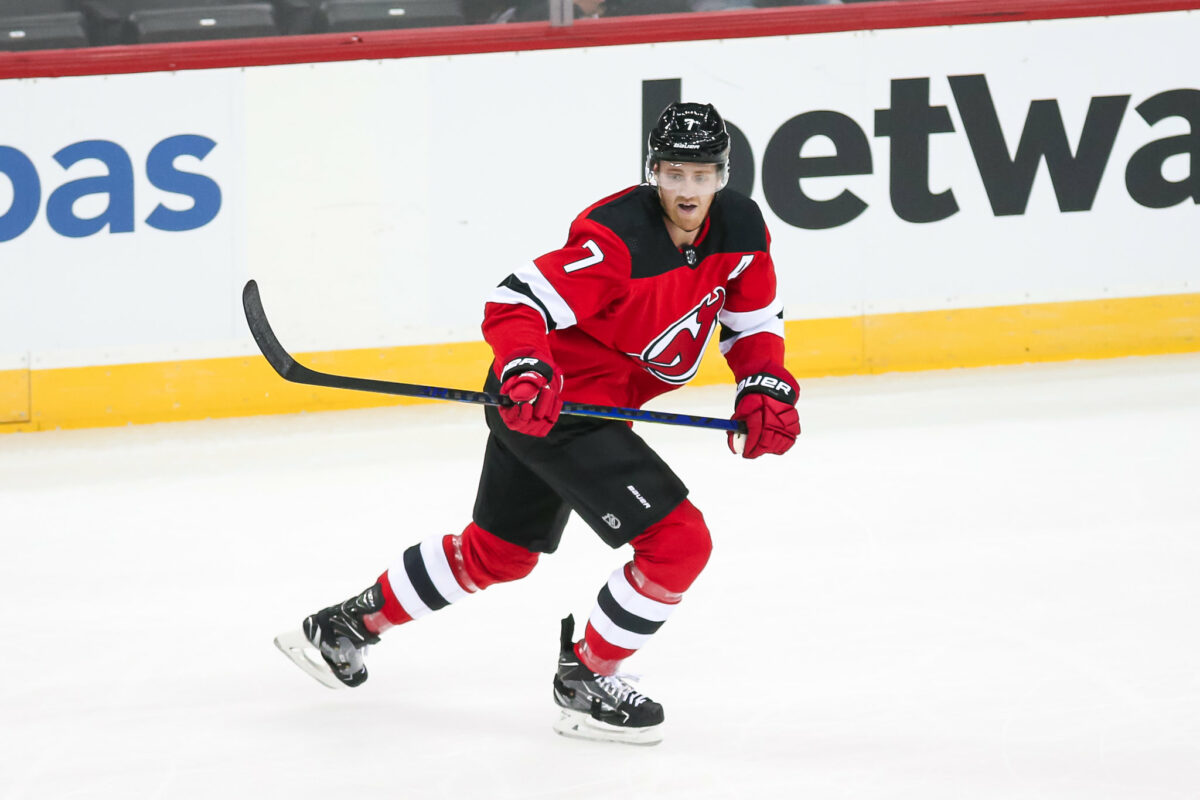
Fitzgerald kicked off the 2022 offseason in a similar fashion by drafting four defensemen with his first five picks. These prospects were, Simon Nemec, Seamus Casey, Daniil Orlov, and Charles Leddy.
A week later, Fitzgerald acquired John Marino from the Pittsburgh Penguins via trade and signed Brendan Smith to a two-year deal. All these names mentioned – besides Casey – fit the prototype, as they all stand above 6-foot.
Once again, looking back two seasons ago, Severson and Siegenthaler were the two tallest defenders on the roster, but now they are tied for third tallest with Smith. That season, the Devils had five defenders listed at 6-foot or smaller. All these defenders did not fit the Fitzgerald prototype, so he shipped them away.
Will Butcher, listed at 5-foot-10, was traded to the Buffalo Sabres in July of 2021. Connor Carrick listed at 5-foot-11 wasn’t re-signed when he hit the market following 2020-21. Sami Vatanen listed at 5-foot-10 was traded to the Carolina Hurricanes at the 2020-21 trade deadline. P.K. Subban listed at 6-foot wasn’t re-signed by the team this offseason. Finally, Ty Smith listed at 5-foot-11 was traded this offseason to the Pittsburgh Penguins for Marino.
Related: Devils’ Defensive Depth Improves With Marino Trade
The two most surprising players on this list are Subban and Smith. Subban is a well-respected veteran who got an endorsement from their rising star Jack Hughes this offseason and Smith is a young player with huge upside. Fitzgerald didn’t care, they didn’t check his boxes or fit his prototype, so he moved on.
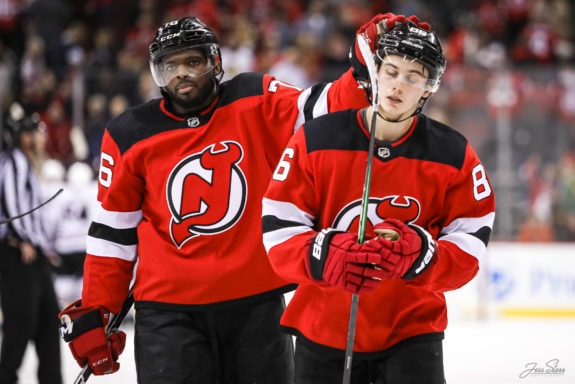
Fitzgerald has made his main narrative clear; he wanted big-body defenders to shore up the back end of the ice and was willing to part ways with the players who didn’t fit that mold. He did have another narrative he wanted to conquer as well, which is balance.
The Devils’ defense has not seen offensive and defensive balance for quite some time, and this was part of the trimming process from the 2020-21 roster. All five players moved since then were more known for their offense, minus Carrick.
Looking back at all the new names, Siegenthaler, Marino, and Graves are known for their defensive play. These three are big bodies who will hit you hard and block a lot of shots, but they aren’t known for their offensive efficiency.
On the other side, Fitzgerald has also brought in big players at this position who are more known for their offensive style of play; Hamilton, Hughes, Nemec, and Casey. The third-year GM is close to clearing this new narrative but won’t come to fruition until these prospects get their chance to debut. This scenario likely won’t come until the end of this season or the beginning of 2023-24.
The majority of the names listed above will be under contract once 2023 rolls around. The Devils currently only have Severson and Graves’ contracts ending after this season. Now, Fitzgerald and staff will have plenty of work to do come the 2023 offseason, but there shouldn’t be a problem keeping one of these players.
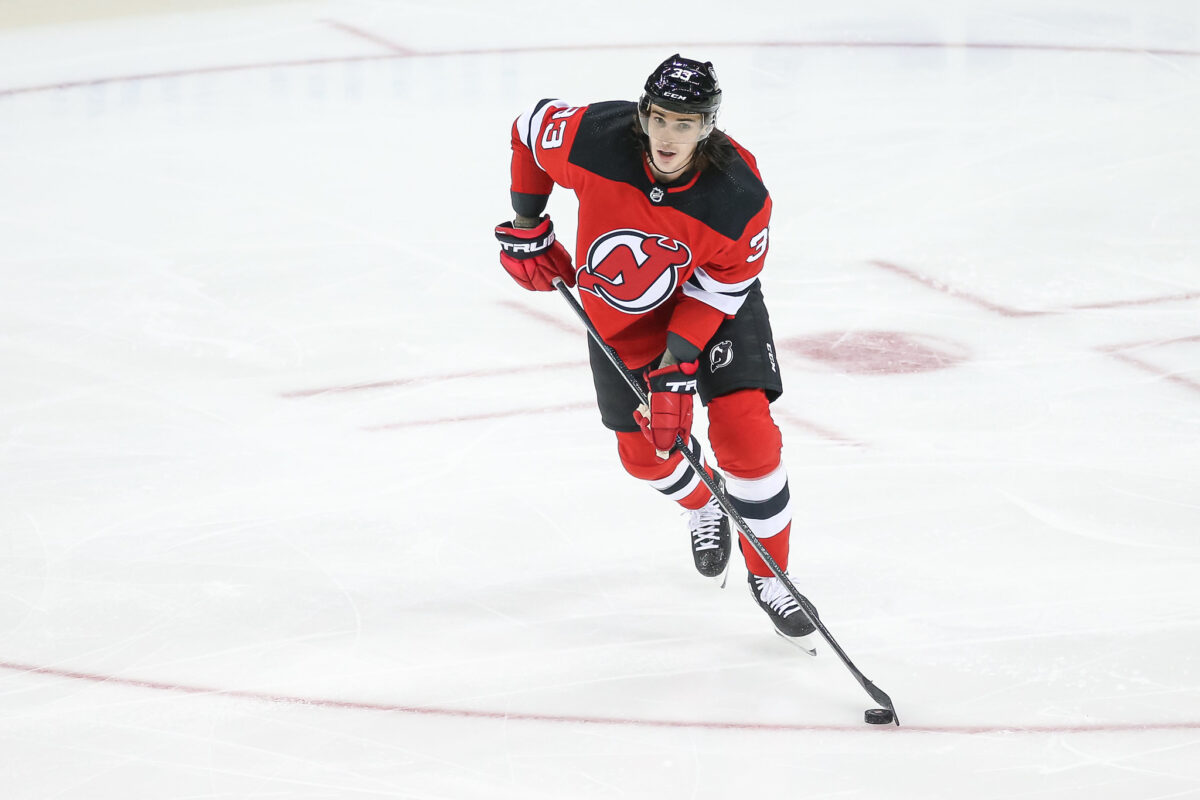
Graves makes the most sense out of the two players. Severson has the longevity in New Jersey, but No. 33 is a left-handed shot, bigger body listed at 6-foot-5, and has found more success in his career in defensive efficiency. There realistically isn’t room on the roster for both players to be re-signed, but I do believe one of them will stay following the end of 2022-23.
Long story short, if one of Severson or Graves is re-signed in the coming months, the Devils will have three defensive-minded defenders and three offensive-minded defenders come 2023-24. All of whom will most likely be under contract through 2025 and listed above 6-foot. This will complete the overhaul on the defensive front and check both narratives Fitzgerald has wanted to fulfill since 2020.
Devils’ Long-term Outlook
In a simplistic form, Fitzgerald is trying to re-create what the Devils had with Ken Daneyko, Scott Stevens, and Scott Niedermayer – who are all listed at 6-foot-1. These three players, who all have their jersey numbers retired by the organization, were paramount in the success the team had from the 1990s to early 2000s.
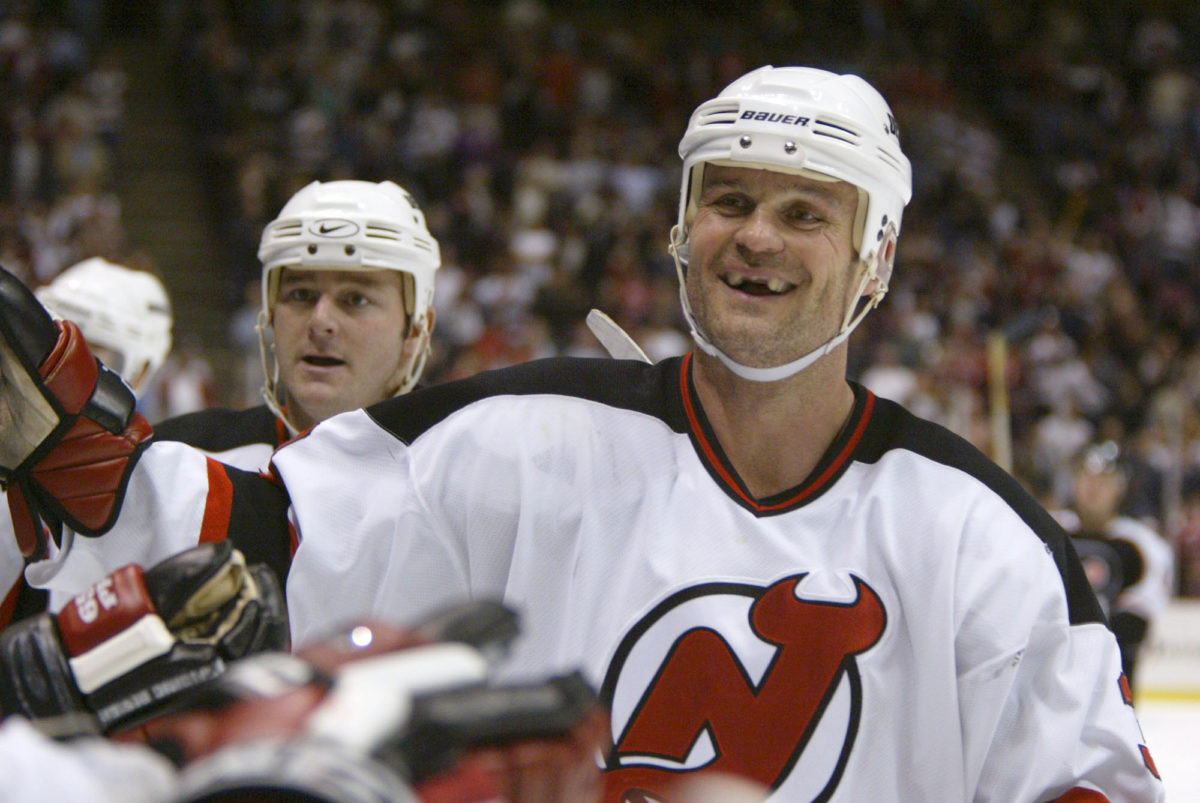
There is still a lot of work to be done by this front office, more specifically in the offensive group, to get the team to where they want to be. The lackluster offense has the fans desiring more production, goals, and high-flying play.
Although true, fans should be excited for what their defensive core looks like now and for years to come. There have been some brilliant moves made by Fitzgerald in two years to shore up a consistent bottom-tier defensive unit. That group is in good hands going forward.